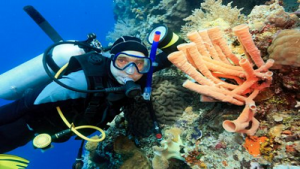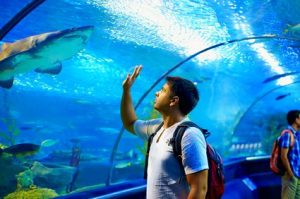Marine Biology Diploma Level 3

This 6 unit Marine course has been specifically designed for those interested in working or volunteering in the many different areas of marine biology.
The course explores the ocean as a habitat and the fascinating diversity of animals that live in the marine environment.
Gain an understanding of oceanography as well as the important areas of the sea such as tropical coral reefs, mangroves, the polar regions, shores, estuaries and the deep sea.
This course also investigates the threats that impact the oceans and how we can preserve the ocean as an important habitat.
Anyone 18 or over and studying our Marine Biology Diploma Course is eligible for ZSL (Zoological Society of London) Fellowship.
*You will have access to the course for 12 months only. You can purchase course extensions.
Unit 1
Oceanography
Unit 1 of this Marine Biology course explores the subject of Oceanography. Oceanography covers the structure of the oceans: how they are created and destroyed. It looks at how ocean topography varies from the shoreline and continental shelf to the ocean basin, abyssal plain and trenches. This module explores the ocean as a habitat and the chemistry and properties of seawater, including how light and sound are transmitted. Learn how waves are formed and how the major currents move around ocean basins.
Unit 2
Coral Reefs
This unit explores the tropical seas and how coral reefs are formed and distributed around the world. Learn how coral animals live and how they evolved to form complex ecosystems. Understand the symbiosis between coral animals and plants that enable each to live and support an amazing diversity of other species in an otherwise barren part of the ocean.
Unit 3
Mangroves and Seagrass Beds
This unit explores the fringes of tropical seas where they form a unique habitat for marine animals. Mangroves are important nursery areas for fish such as lemon sharks and they form a buffer between the land and the open ocean. Many species live in mangroves permanently and they are important food sources for residents and visitors alike.
Unit 4
The Polar Regions
This unit explores the polar seas and the important differences between the Arctic and Antarctic regions. Learn about the amazing adaptations to the animals that live in such extreme environments and how they are able to live in sub-zero temperatures. Explore some of the enigmatic marine animals of the polar regions such as polar bears in the Arctic and penguins in the Antarctic.
Unit 5
Shores and Estuaries
Although a smaller number of species appear in this group they are some of the more fascinating to study.
Unit 6
The Deep Sea
The deep sea is a fascinating place that we still know little about. Learn about the strange animals that are adapted to living in the deep sea and how they cope with extreme cold, continuous darkness and intense pressure. We look at how energy is transferred to the deep ocean and how it supports life in the abyss.
We offer a selection of accredited and employer recognised courses specifically designed for careers working with animals.
If you have any questions about our courses, please contact us.
We’ve assisted many people to achieve their goal to work with animals. Read more about our 5-star reviews and student success stories.
Gain relevant training to achieve your goal to work with animals.



